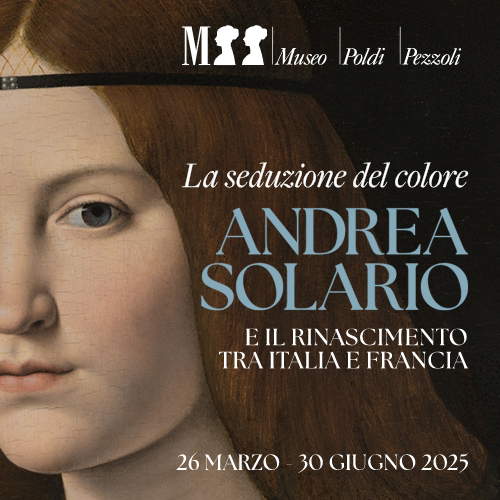The Palau de la Música Catalana, a masterpiece of modernism
In the heart of Barcelona stands a masterpiece that is a symbol of Catalan modernism, often overshadowed by better-known works such as the Sagrada Família or Casa Batlló, but of equal, extraordinary beauty. The site of a cultural renaissance and a sublime fusion of art, design and tradition, the Palau de la MúsicaCatalana is one of the most precious jewels of Barcelona’s artistic heritage. The building was built between 1905 and 1908 as the home of the Orfeó Catalá, a choral institution founded in 1891 by Lluís Millet and Amadeu Vives with the aim of promoting Catalan music. It is one of the most important choirs in Catalonia and has played a crucial role in the revival of local cultural traditions, especially after periods of political repression at the time when Spain was under dictatorship. Over the years, in fact, the choir has taken the Catalan musical tradition to national and international stages, allowing an ever-widening audience to come into contact with the history and culture of Catalonia. The palace still plays a role of fundamental importance to the community and continues to be closely linked to the activities of the Orfeó.
The Palau is not only a place of culture but above all a great architectural masterpiece. It was commissioned from Lluís Domènech i Montaner, one of the most brilliant interpreters of Spanish modernism, whose contribution was decisive in the modernization of the city. The architect’s fame was often overshadowed by his contemporary Antoni Gaudí, but unjustifiably so, as Domènech i Montaner designed numerous major works, such as the Hospital de Sant Pau, Casa Lleó Morera, and Castell dels Tres Dragons. The Palau de la Música Catalana was conceived as an open space to give a feeling of breath and freedom. Prominent among the materials used are enameled glass and crystal, which give lightness and transparency. The entrance itself is designed not to obstruct the gaze, allowing glimpses of the interior structures, such as the stairways and other rooms, which are visible even before entering the building. The structure is a triumph of color and decoration, filled with mosaics and sculptures that combine symbols of Catalan culture with universal musical themes.
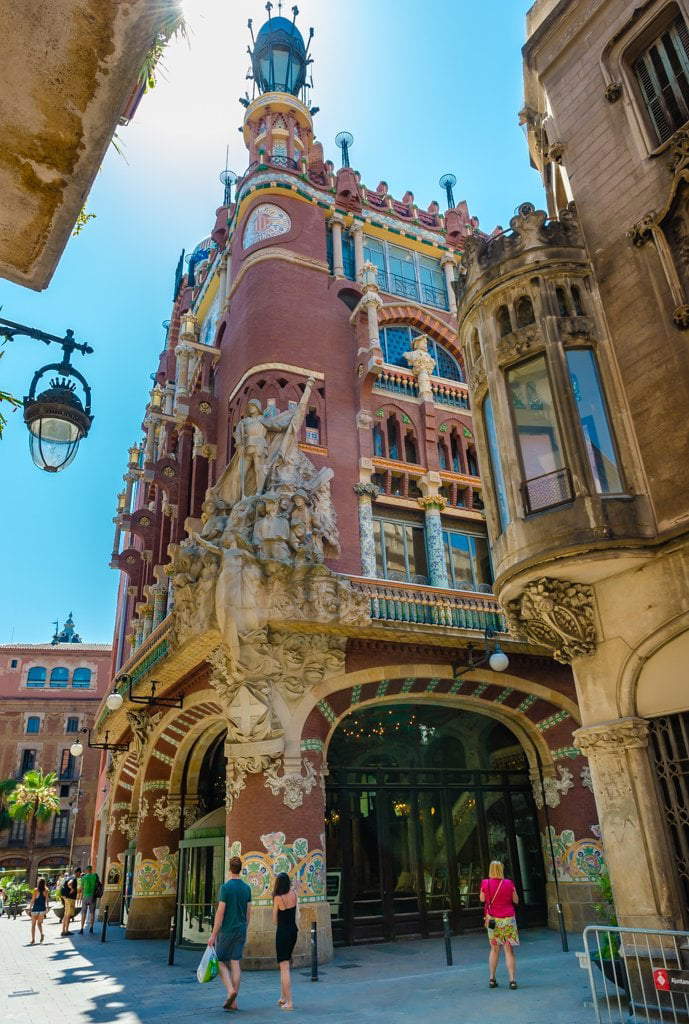
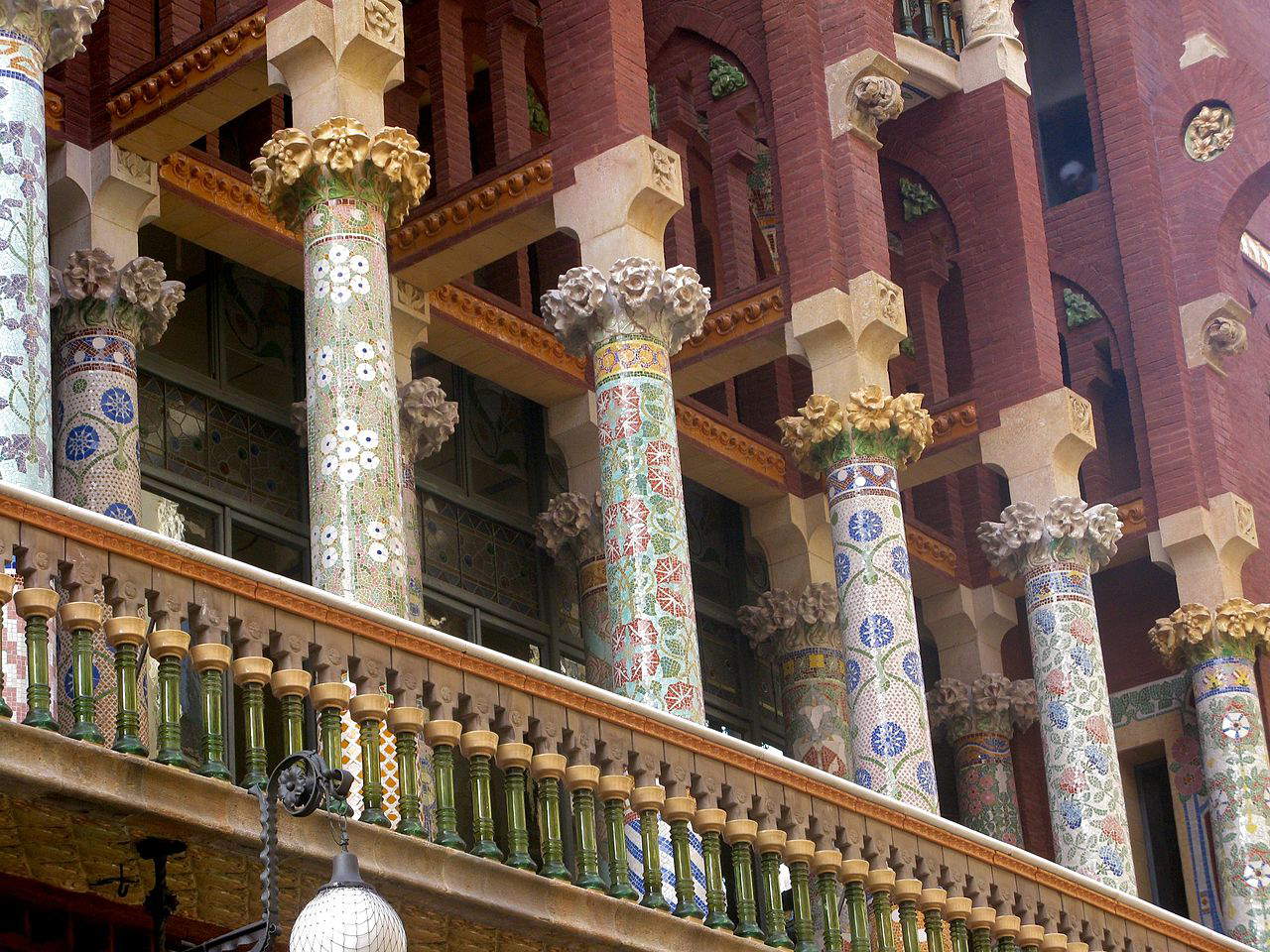
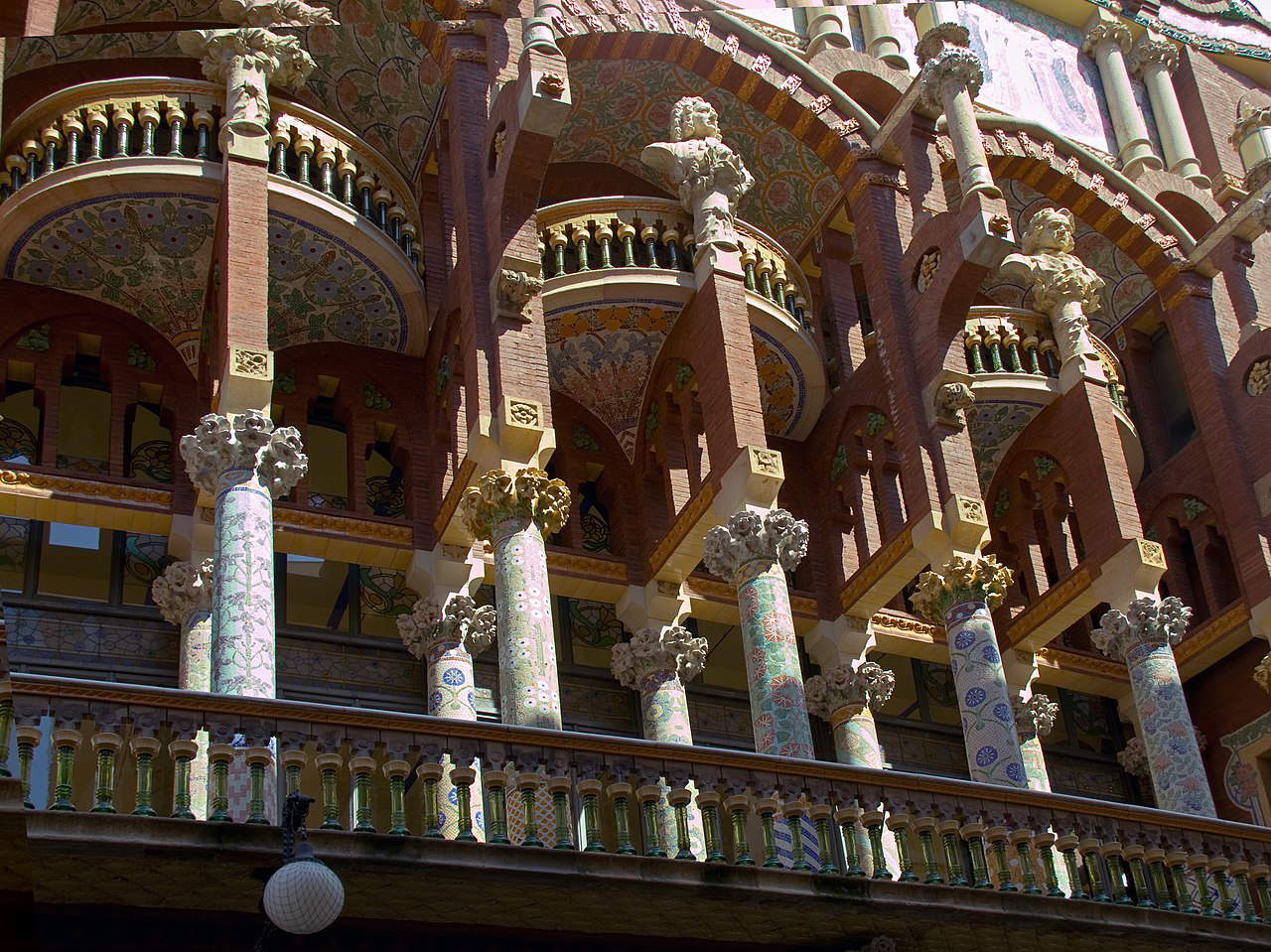

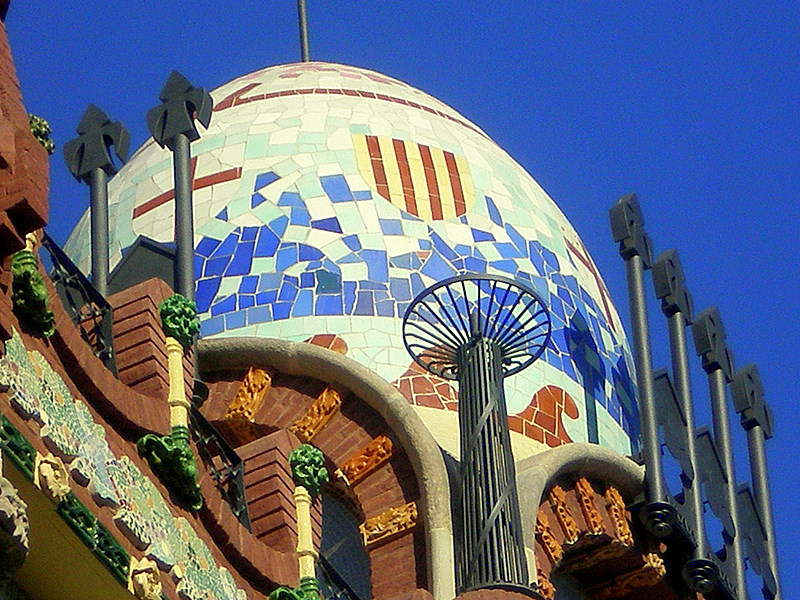
On the main facade is a double colonnade supporting an intricate series of arches and small balconies. The columns are decorated with mosaics with floral motifs that reproduce Catalan vegetation and give the palace a lively and picturesque appearance. Above the main three, in the upper register, are busts of the great composers Beethoven, Bach and Wagner. One of the most iconic elements of the palace is the sculptural group at the corner, set above what used to be the carriage entrance, dedicated to characters from Catalan folk songs and created by the great Spanish sculptor Miquel Blay.
Theinterior of thebuilding is equally extraordinary. The concert hall, the heart of the Palau, is one of the most spectacular in the world. The special feature is the stunning stained glass dome, representing a huge sun, placed in the center of the ceiling. This skylight allows the sun’s rays to enter the hall evenly, and the colors of the glass, which vary from golden yellow to blue, create a unique atmosphere. The entire surface of the ceiling is adorned with pink and white ceramic roses. On the side walls adjacent to the stage are two other sculptural groups: the first depicts a group of maidens in the act of singing a Catalan ballad, while the other is dedicated to the Ride of the Valkyries, Richard Wagner’s most famous piece. Finally, above the stage is a large organ from 1908 that has dominated the hall ever since as a faithful guardian and is a symbol of the Palau’s musical prestige.
With its floral decorations, bright colors, patterned stained glass windows, and skylight that echoes the colors and shapes of the sky, the concert hall takes on the appearance of a picturesque artificial garden. The use of materials such as glass, wrought iron and ceramics is found everywhere, and this demonstrates the admirable integration of decorative art and architecture, typical of modernism. It was for the time a building full of innovations: that is why in 1971 it was declared a national monument, while from 1982 to 1989 it was restored and expanded by architects ÓscarTusquets and Carles Diaz. In 1997, it was finally declared a UNESCO World Heritage Site.



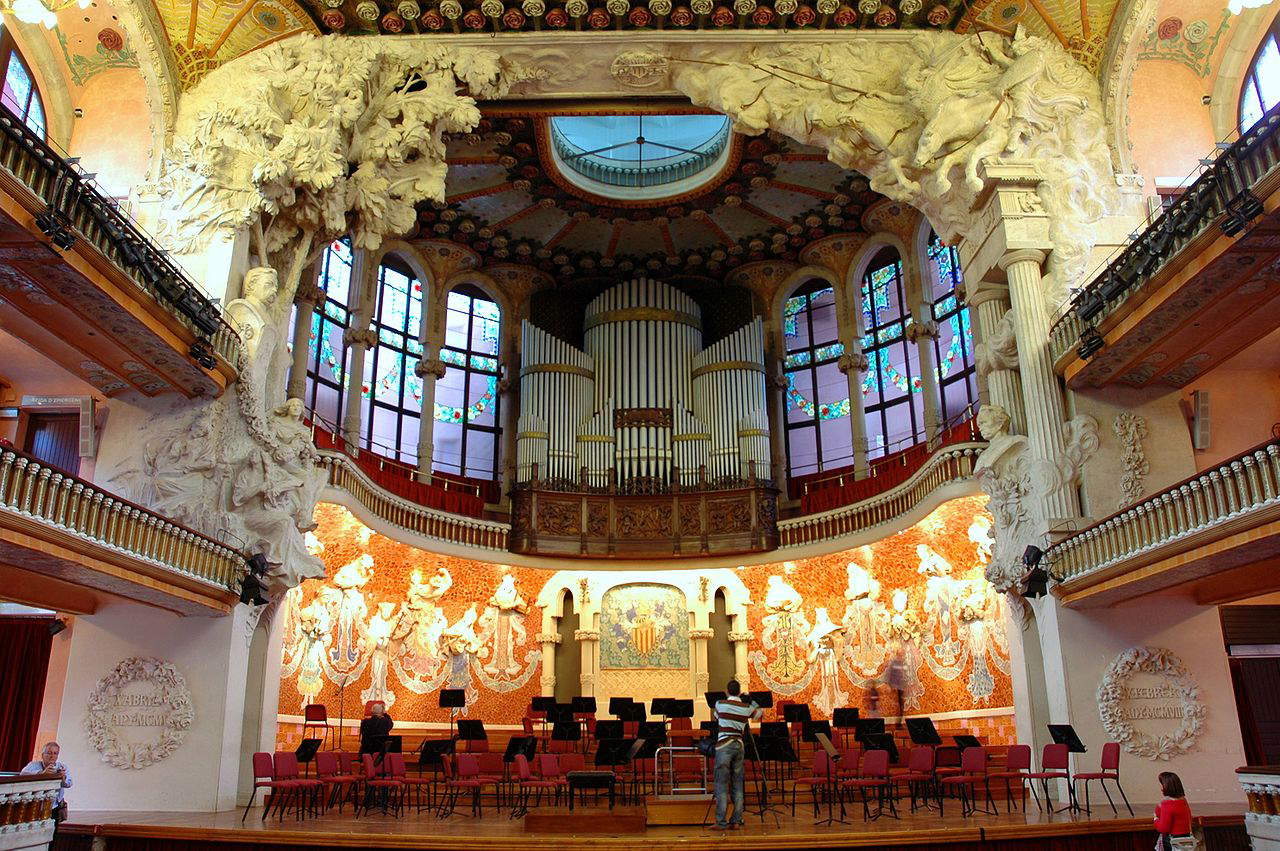

A few years later, in 2002 to be exact, the adjacent church of Sant Francesc de Paula was torn down to give more light to the palace and to allow for its expansion. The convent-church adjacent to the palace was built starting in 1597 but from the beginning its was not a fortunate story. In fact, the area was characterized by an agricultural environment, rich in orchards, which attracted thieves and thugs who attempted to carry out thefts and petty crimes. The friars, therefore, soon abandoned the area, thus leaving the convent. In 1854 the church suffered a terrible fire, in which the high altarpiece and part of the building were lost, and it was restored the following year. On May 31, 1904, it was agreed between the church and the city administration to build the Palau de la Música on the very ground where the convent cloister was installed.
Later, on July 20, 1936, the church was burned down and the relics and art treasures inside were looted. Lack of economic resources meant that its restoration did not begin until the mid-1940s. The facade was never completed, giving the image of an unfinished church, as if its end had been foreshadowed. It was in 1998 that the Palau’s further renovation and expansion project began. One of the goals of the second phase of expansion was to realize Montaner’s dream: to give full light to the left facade of the palace. The church of Sant Francesc de Paula was thus permanently demolished to give more light to the building. The demolition, despite its historical significance, took place after the approval of the presbyteral council.
The Palau de la Música is not only a modernist masterpiece or a must-see stop for tourists in the city. Above all, the Palau is a custodian of the roots of a culture that stands the test of time. In an ever-changing city with an increasingly international and cosmopolitan outlook, it stands as a symbol of a living struggle, a bulwark of a people who proudly defend their identity and want to keep alive the traditions and essence of an ancient and complex culture.
Warning: the translation into English of the original Italian article was created using automatic tools. We undertake to review all articles, but we do not guarantee the total absence of inaccuracies in the translation due to the program. You can find the original by clicking on the ITA button. If you find any mistake,please contact us.






